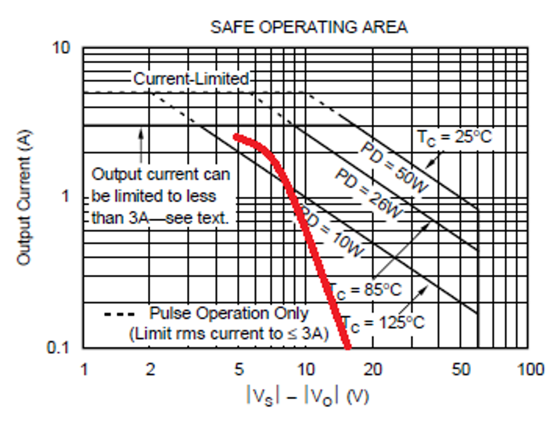SBOS070D October 1997 – December 2019 OPA548
PRODUCTION DATA.
- 1 Features
- 2 Applications
- 3 Description
- 4 Revision History
- 5 Pin Configuration and Functions
- 6 Specifications
- 7 Detailed Description
- 8 Application and Implementation
- 9 Power Supply Recommendations
- 10Layout
- 11Device and Documentation Support
- 12Mechanical, Packaging, and Orderable Information
Package Options
Mechanical Data (Package|Pins)
Thermal pad, mechanical data (Package|Pins)
Orderable Information
10.1.1 Safe Operating Area
Stress on the output transistors is determined both by the output current and by the output voltage across the conducting output transistor, VS – VO. The power dissipated by the output transistor is equal to the product of the output current and the voltage across the conducting transistor, VS – VO. The Safe Operating Area (SOA curve, Figure 40) shows the permissible range of voltage and current.
 Figure 40. 4-Ω Load Plotted on OPA548 SOA for this Application
Figure 40. 4-Ω Load Plotted on OPA548 SOA for this Application The safe output current decreases as VS – VO increases. Output short circuits are a very demanding case for SOA. A short-circuit to ground forces the full power-supply voltage (V+ or V–) across the conducting transistor. Increasing the case temperature reduces the safe output current that can be tolerated without activating the thermal shutdown circuit of the OPA548. For further insight on SOA, consult Application Bulletin SBOA022.